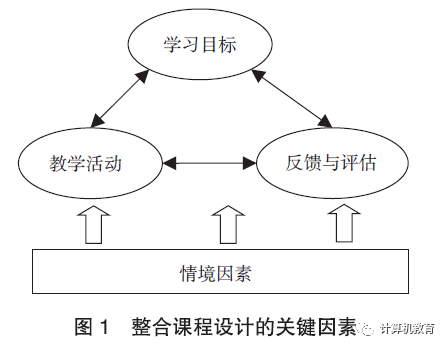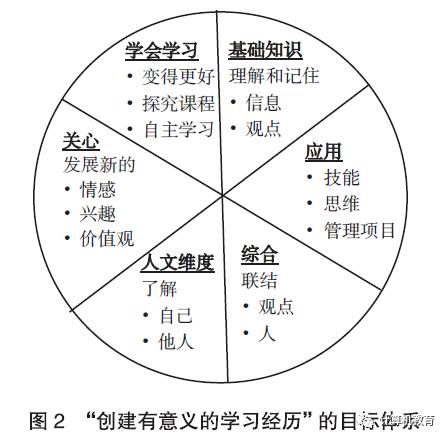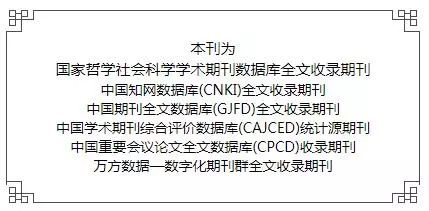1 Ideological and Political Education and Its Research and Practice
General Secretary Xi Jinping pointed out at the National Conference on Ideological and Political Work in Colleges and Universities that “we must adhere to the central link of moral education and integrate ideological and political work throughout the entire process of education and teaching to achieve all-round education for students.” Making good use of the main channel of classroom teaching to integrate elements of ideological and political education into various courses and implementing “curriculum ideological and political education” has become a necessary measure to cultivate a new generation of successors to the socialist cause in the new international and domestic environment, meeting the needs and expectations of students’ growth and development.
The core value of curriculum ideological and political education lies in nurturing people, requiring teachers to consciously, systematically, and purposefully design teaching links during the teaching process of various courses, creating an educational atmosphere, and organically integrating moral norms, ideological awareness, and political concepts recognized and advocated by the socialist direction of running schools into the teaching process in an indirect and implicit way [1]. Many universities have actively constructed a “three-in-one ideological and political education teaching system of ideological and political theory courses, comprehensive quality courses, and professional courses” [2]. Among them, implementing curriculum ideological and political education in professional courses is the most critical and challenging part [3].
From the relevant literature retrieved, the research and practice of curriculum ideological and political education in humanities and social sciences courses are relatively rich, while exploration in engineering and science courses is not common. Literature [4] analyzes the difficulties in carrying out ideological and political education in engineering and science courses and proposes to use “humanistic perspectives to reflect on the development of technology” as the starting point for curriculum ideological and political education, focusing on scientific thinking as the key to curriculum ideological and political education, and embedding issues in the profession as the value support of curriculum ideological and political education, ultimately grounding curriculum ideological and political education in “serving the people.” Literature [5] explores the ideas for implementing curriculum ideological and political education in the Instrument Analysis course based on this guidance. Literature [6] and Literature [7] respectively discuss the implementation paths of curriculum ideological and political education in engineering and science courses from professional and vocational perspectives. Implementing curriculum ideological and political education requires strengthening teachers’ ideological and political literacy, exploring and referencing ideological and political elements, and more importantly, requires methodological guidance at the level of teaching design to ensure the scientificity and standardization of curriculum ideological and political education.
2 Integrating Curriculum Design Model for Creating Meaningful Learning Experiences
The Integrating Curriculum Design Model for Creating Meaningful Learning Experiences (hereinafter referred to as the Integrating Curriculum Design Model) is a student-centered teaching design framework proposed by American scholar L. Dee Fink [8]. This framework pursues the goal of “creating meaningful learning experiences for students” from six dimensions: foundational knowledge, application, integration, human dimension, caring, and learning how to learn, allowing students to continuously find the purpose of what they learn in relation to themselves, others, and society during the learning process, which aligns with the teaching objectives of curriculum ideological and political education that focuses on nurturing people and emphasizes the organic integration of ideas, morals, and political concepts into the classroom.
The key factors of the Integrating Curriculum Design are shown in Figure 1. The bottom box (situational factors) represents the information to be collected, and the three circles represent the decisions to be made. Decisions must be made with the support of information, and the three decisions are interconnected and mutually supportive.

Based on these key factors, L. Dee Fink provides a three-stage, twelve-step curriculum design method. Compared with other teaching design models, the Integrating Curriculum Design Model is simpler and more practical, particularly beneficial for university teachers across various majors and disciplines [9]. The author, in the flipped classroom teaching reform of the Assembly Language Programming course in the Computer Science and Technology major, under the guidance of the Integrating Curriculum Design Model, integrated humanistic and ideological elements into the teaching content and methods, enriching the course’s connotation, providing students with a good learning experience, and achieving the goals of curriculum ideological and political education, while these elements effectively ensured the teaching effectiveness.
3 Key Points of Teaching Design for Assembly Language Programming
The foundational work for conducting Integrating Curriculum Design is to answer a series of key questions related to the key factors in the initial stage of design.
1) What are the important situational factors?
Consider how many students there are, what knowledge preparation students have, what specific difficulties may arise during the course of study, and also consider what expectations students, schools, industries, and society have for this course, and how this course relates to other related courses. Assembly Language Programming is a selective course for second-year students in the Computer Science and Technology major. From the perspective of course content, assembly language is a low-level programming language typically used for driver programs, operating systems, and other applications requiring efficient computation. Learning assembly language can help students better understand computer systems and improve their programming and debugging skills. From the learners’ perspective, students already have a preliminary understanding of programming and programming languages, have learned the general principles of computer composition, and have a strong desire to improve their hands-on skills and problem-solving abilities, but may feel some difficulty due to the complexity of assembly language. Instructors can help students address issues of insufficient self-learning ability and awareness by establishing online courses and conducting teaching in a flipped classroom format, promoting deep learning and increasing their recognition of the major, making them willing to invest time and effort in learning.
2) What are the learning objectives?
Consider what students can gain from the course. For example, what should students master by the end of the course? What will they remember years later? What aspects of thinking ability and knowledge application should students develop? How can students maintain interest in the course after its completion and continue to learn related knowledge? L. Dee Fink provides a classification system for teaching objectives called “Creating Meaningful Learning Experiences,” as shown in Figure 2. These six types of objectives will help teachers clarify professional knowledge and ability goals while integrating components of curriculum ideological and political education.

(1) Foundational Knowledge. Any course requires students to know necessary concepts, terminology, and ideas. In the assembly language course, students need to remember the main instructions and formats in 8086 assembly language; they need to understand the coordination and cooperation of various components of the computer during the execution of assembly instructions.
(2) Application. This helps students use what they have learned to solve problems, perceiving the value of knowledge application, which belongs to the tool-level value. The application objectives in the assembly language course include being able to use debugging tools to execute assembly instructions, observing the micro changes in the computer’s registers and memory during instruction execution (skills), being able to compare the execution efficiency of instructions and evaluate the quality of program structures (critical thinking), and being able to design solutions and write well-structured programs in assembly language to solve practical problems (practical thinking).
(3) Integration. This involves connecting different perspectives, thoughts from different fields, different people, and different aspects of life, allowing students to see and understand the relationships between different things, helping students generate meaning in learning. Through learning assembly language programming, students can understand programs from a more microscopic perspective, deeply realize that both data and programs are essentially binary numbers, and enhance their understanding of the overall concept of computer systems composed of hardware and software (integration of perspectives), establishing connections between assembly language and future job positions (integration of people).
If the above three types of objectives have received attention in traditional teaching processes, the following three types of objectives are areas where curriculum ideological and political education can play a greater role.
(4) Human Dimension. This allows students to gain insights into the significance of the knowledge learned for themselves and society, including new understandings of themselves (self-image), new ideas about their future (self-ideal), better understanding of others and their behaviors, and learning methods for better interaction with others (including human society). In the assembly language course, opportunities for active participation and group cooperation will be provided, allowing students to recognize themselves and understand others in real interactions, learn to listen and express, and develop important soft skills for their future careers (self and others). The focus on operational efficiency in assembly language can help students realize the significance of development efficiency and operational efficiency for human life and the ecological environment (society and environment).
(5) Caring. This involves paying attention to students’ feelings, compressing one-way instruction from teachers in the classroom, providing more authentic practical opportunities for students, and creating a better learning experience (emotion), enhancing their interest in learning and motivation; in effective learning processes, establishing learning concepts that align with the knowledge economy era, generating the desire and confidence to contribute to the development of the country’s technological undertakings (values).
(6) Learning How to Learn. Leveraging the requirement of “learn first, teach later” in flipped classrooms to improve time management skills outside of class and enabling students to engage in self-directed learning using various resources; in class, training the ability to “learn by doing” and group discussions, allowing students to continue engaging in inquiry-based learning and become autonomous learners after the course, guiding more effective future learning.
There are interrelated and mutually reinforcing relationships among these six dimensions of objectives, where the achievement of learning in any one dimension will simultaneously strengthen the possibility of achieving learning in other dimensions, providing foundational guarantees for the effectiveness of professional knowledge learning and curriculum ideological and political education.
3) What kind of feedback and assessment should be provided?
The Integrating Curriculum Design Model adopts the principle of “backward design,” considering feedback and assessment issues before designing teaching activities. This allows teachers to design effective teaching activities in the next step with more targeted approaches, making the work easier and more straightforward. In the assembly language programming course, a primarily formative assessment strategy is adopted, utilizing online teaching platforms to collect data on students’ learning behaviors, encouraging student engagement in classroom activities, providing clear and appropriate goals and standards, and creating opportunities for self-assessment. Through weekly structured summaries, students are helped to distill the knowledge and skills learned each week, reflect on existing problems, and teachers provide timely guidance and feedback through the online teaching platform.
4) What types of teaching activities will achieve the objectives?
Teaching activities include what students need to do (learning activities) and what teachers will do (teaching activities). Guided by learning objectives and assessment methods, to promote meaningful learning, teachers should provide as many opportunities for active learning as possible. The assembly language programming course adopts a flipped classroom model for teaching, where structured foundational knowledge is taught by teachers in traditional classrooms, requiring students to complete it before class. By providing students with learning task sheets, teaching videos, and self-test questions, and organizing online learning exchanges, support and assistance for students’ pre-class autonomous learning are provided. In the classroom teaching segment, teachers address necessary explanations for issues arising from pre-class autonomous learning, while using a variety of classroom activities to achieve learning objectives for the remaining substantial time. The design of classroom activities should consider the characteristics of course content and students’ cognition, aiming to achieve both the goals of learning professional knowledge and skills, while reasonably integrating elements of curriculum ideological and political education, allowing both to mutually promote each other.
5) Are all elements consistent and mutually supportive?
Finally, it is necessary to examine whether the existing situational factors, teaching activities, learning objectives, feedback, and assessments can match and support each other, promoting the generation of meaningful learning experiences.
4 Classroom Teaching Activity Cases Integrating Curriculum Ideological and Political Education
Classroom teaching activities are the final step in achieving teaching effectiveness. For specific professional knowledge points, flexible and diverse course teaching activities can be designed around the goals of meaningful learning. Some examples from the assembly language course (with corresponding learning objectives noted in parentheses) are as follows.
1) Teaching Case 1: Conducting Classroom Learning through Group Cooperation.
(1) Teaching Context: After adopting the flipped classroom teaching model, students self-studied foundational knowledge before class, allowing teachers to avoid spending excessive time lecturing and primarily organizing students to learn through group cooperation in class, helping students internalize knowledge and learn to apply it.
(2) Meaningful Learning Experience: The classroom is no longer a “one-man show” by the teacher; under the teacher’s guidance, students adopt active learning methods (learning how to learn), with learning activities including exercises, discussions, and project completion (application, including skills and thinking across multiple levels), with topics ideally sourced from real-life and production needs (integration). In group cooperation, opportunities for high-performing students to express themselves (learning how to learn) are provided, while students who cannot complete tasks independently receive timely assistance (caring). In group activities, students must listen and express, providing conditions for better understanding themselves and others’ thinking (human dimension), and the positive feelings gained from active learning will help students learn better (caring), while in the practice of cooperation, they gradually become better collaborators (learning how to learn).
2) Teaching Case 2: Cultivating Humanistic Qualities through “Borrowing Topics to Expand.”
(1) Teaching Context: Technology develops for and serves people; the technological level of industries and sectors reflects a country’s competitiveness and affects everyone’s life. The technological elements in engineering and science courses can always be linked to social development issues, tracing the history of technological development and exploring the impacts of technology on the world, providing opportunities to integrate curriculum ideological and political education while ensuring the effectiveness of technical learning.
(2) Meaningful Learning Experience: When introducing assembly language used for low-level programming, the history of the development of China’s independently developed operating systems is introduced, enhancing students’ urgency and confidence in pursuing technological advancement (human dimension); dedicated classroom learning time is arranged, allowing each student to observe the subtle changes in registers and memory during instruction execution using debug, appreciating the beauty of the process (caring), and extending this to the importance of coordinating and cooperating to complete work within organizations (human dimension); by comparing two solutions to the same problem with significant differences in running efficiency, students are guided to recognize the significance of good algorithms for a greener Earth (human dimension).
3) Teaching Case 3: Triggering Chain Thoughts through Real Events.
(1) Teaching Context: When learning data processing techniques, students generally have doubts about the design of data areas in assembly language. The author selects a video from a local television station that reports on a data recovery engineer and features the author to spark discussion, providing students with vivid learning experiences from multiple perspectives.
(2) Meaningful Learning Experience: Before class, a video is played to attract students’ attention using the event in which the teacher appears (caring); after class, the content of the protagonist’s work and the economic and social benefits it brings are introduced (integration, human dimension); from the protagonist’s enthusiastic service to the public, students can discover the spirit of dedication and focus (caring, human dimension); the protagonist’s superb skills are derived from the accumulation of practice, encouraging students to become high-level applied talents capable of serving society through effective practice (learning how to learn). Finally, a brief introduction to the technologies involved in data recovery is provided, exploring different perspectives on data in courses such as C language, assembly language, principles of computer composition, and database principles, showcasing the diverse and dynamic forms of data in the computer field, establishing close connections between multiple courses (integration), and stimulating students’ interest in related courses and professional learning (caring).
4) Teaching Case 4: Discovering Opportunities from Accidental Events.
(1) Teaching Context: The teacher provides students with electronic documents to be used in class a day in advance, encrypting the documents to prevent students from seeing the content beforehand. As a result, several students quickly report that they have cracked the password. The teacher decides to leverage students’ competitive spirit and curiosity by presenting them with a challenge: provide a longer password document that cannot be easily cracked using existing software, guiding them to find the password by analyzing the file structure.
(2) Meaningful Learning Experience: In class, the teacher tells the story of how several students cracked the password (caring) and formally presents the challenging question (application, requiring innovative and practical thinking), supplements students with basic ideas for problem-solving and provides necessary reference materials (foundational knowledge), inspires students to recognize the relationship between this problem and the course (integration), and promises rewards for successful challengers (caring). Finally, even students who did not succeed in the challenge reflect that they learned a lot during the problem-solving process (learning how to learn).
5 Conclusion
Implementing curriculum ideological and political education in professional courses is a necessary measure to achieve the educational goal of nurturing morality. How to naturally integrate elements of curriculum ideological and political education into courses requires clear guiding principles for teaching design. This article introduces the method of using L. Dee Fink’s “Creating Meaningful Learning Experiences” Integrating Curriculum Design Model in the reform of the Assembly Language Programming course.
Some teachers worry that introducing curriculum ideological and political education will take up time for teaching professional knowledge, but such concerns are unnecessary [1]. Practice again shows that when teaching strategies are appropriate, this situation not only will not occur, but the introduction of curriculum ideological and political education will also support and guarantee the teaching effectiveness of professional courses. The content of assembly language itself poses challenges for students, and the flipped classroom learning method requires students to make changes in multiple aspects, which is precisely from the perspectives of integration, human dimension, caring, and learning how to learn that traditional teaching often overlooks, integrating emotional, attitudinal, and value components from ideological and political education to provide students with good learning experiences and motivation, ensuring both the learning effectiveness of the course content itself and expanding the course’s educational function.
References
[1] Tian Hongfen, Fu Hong. Curriculum Ideological and Political Education: Practical Path for Integrating Ideological and Political Education into Professional Course Teaching in Universities [J]. Future and Development, 2018, 42(4): 99-103.
[2] Wang Han. Reflection and Reform of Ideological and Political Education in Professional Courses in Universities [J]. Management Observation, 2017(30): 138-140, 143.
[3] Lu Daokun. Several Core Issues and Solutions in Promoting Curriculum Ideological and Political Education: Discussion Based on Professional Curriculum Ideological and Political Education [J]. Ideological Theory Education, 2018(3): 64-69.
[4] Yu Jiangtao, Wang Wenqi, Xu Yanqing. The Logic and Essentials of Professional Teachers Practicing “Curriculum Ideological and Political Education”: Taking Engineering and Science Courses as Examples [J]. School Party Building and Ideological Education, 2018(1): 64-66.
[5] Lai Shoujun, Guan Xiaolin, Fei Xiang, et al. Exploration of Curriculum Ideological and Political Education in Engineering and Science Courses: Taking the Instrument Analysis Course as an Example [J]. Chemical Engineering and Equipment, 2019(1): 310-311.
[6] Jiang Chen, Chen Liguo, Zhu Jianmin, et al. Pathways for the Curriculum System of Ideological and Political Education in Universities: From “Ideological and Political Courses” to “Curriculum Ideological and Political Education”: Taking Mechanical Manufacturing Courses as Examples [J]. Journal of Beijing City University, 2019(1): 48-52.
[7] Kuang Jianghong, Zhang Yun, Gu Ying. Exploration and Practice of Implementing Curriculum Ideological and Political Education in Engineering and Science Courses [J]. Management Observation, 2018(1): 119-122.
[8] (US) L. Dee Fink. Creating Meaningful Learning Experiences: Principles of Curriculum Design for Comprehensive Universities [M]. Hu Meixin, Liu Ying, Trans. Hangzhou: Zhejiang University Press, 2006: 47.
[9] Gao Limin. Teaching Design: Element Analysis and Comparison of Design Models [J]. Modern Distance Education Research, 2005(2): 12-16.
Funding Project:2016 Shandong Province Undergraduate Colleges Teaching Reform Research Project “Action Research on Flipped Classroom Teaching Reform Based on Students’ Self-Carried Mobile Devices in Local Colleges” (Z2016M082).
Author Profile:He Lijian, Male, Associate Professor at Yantai University, research direction in information technology education, computer education, [email protected].
(End)
More Exciting:
[Directory] “Computer Education” 2019 Issue 11
Analysis and Insights on Computer Undergraduate Course Setup at the University of Tokyo
Construction of Robotics Course System in Intelligent Science and Technology Major
“Double Ten Thousand Plan” National-level First-class Undergraduate Course Recommendation and Recognition Method
Teaching Reform and Practice of Artificial Intelligence Course at Peking University
Professor Zhou Zhihua: How to Conduct Research and Write Papers?
Approaching the New Era of “Intelligent+” and Innovating “Intelligent+” Professional Education
Current Demand Status and Countermeasures for Artificial Intelligence Talent
[Directory] “Computer Education” 2019 Issue 10
New Engineering and Big Data Major Construction
[Directory] “Computer Education” 2019 Issue 9
How Should Graduate Students Conduct Research Work?
Some Thoughts on Teaching Data Structures in Artificial Intelligence Major
[Directory] “Computer Education” 2019 Issue 8
“Computer Education” Magazine Selected for the “CCF Recommended Chinese Science and Technology Journal Directory”!!!
Professor Liu Yunhao’s Responses on Artificial Intelligence
[Yan Shi Series] Distinguishing Truth from Falsehood—Starting from ESI Indicators
Stone from Other Hills Can Serve to Polish Jade—Compilation of Research Articles on Computer Education at Home and Abroad
Editor’s Note: The Original Intention of Educational Journals

